bitternut hickory
(Carya cordiformis)
Conservation • Wetland • Description • Habitat • Ecology • Use • Distribution • Taxonomy
Description |
||
Bitternut hickory is a slow-growing, deciduous, hardwood tree. It rises on a single stem from a deep root system with a central taproot. In Minnesota mature trees are usually 40′ to 60′ tall and 12 ″ to 24″ in diameter at breast height. Large individuals can reach over 90′ in height and 48 ″ in diameter. It is a long-lived tree, often surviving 200 years. The trunk is straight and slender. It is distinct into the upper part of the crown and is often free of branches for much of its length. The crown is narrow, rounded, and short. The branches are slender and ascending. The bark on young trees is thin and gray or greenish-gray, with pale, orangish or yellowish, irregular, vertical cracks. It remains like that for many years. As it ages it separates into tight, flat-topped, interlacing, vertical ridges and narrow, shallow furrows. At this stage it has an appearance similar to a woven basket. On older trees it develops tight, rough ridges and diamond-shaped furrows, looking much like the bark of green ash. It does not develop loose, shaggy scales at any stage. The twigs are moderately stout, greenish-brown to gray brown, with numerous lighter dots (lenticels). They have whitish hairs near the tip but are otherwise hairless. They are round in cross section and have brownish-white, star-shaped pith. The leaf scars are slightly raised and 3-lobed to oval. They have many bundle scars that are either scattered or arranged in 3 clusters forming a monkey face pattern. Terminal buds are sulphur yellow, ⅓″ to ¾″ long, slender, and flattened, with 2 to 4 valve-like bud scales. The scales are themselves densely scaly with yellow, bran-like scales, and have straight, soft hairs near the tip. Lateral buds are similar but shorter, diverge from the twig, and have 2 protective bracts at the base. The buds open valve-like when the new shoot emerges. The leaves are deciduous, alternate, 6″ to 10″ long, and pinnately divided into usually 7 or 9, sometimes 11, rarely 5, leaflets. They are on 1¼″ to 2¾″ long, minutely hairy leaf stalks. The upper 3 leaflets are elliptical to inversely egg-shaped, 2¾″ to 6″ long, ¾″ to 2⅜″ wide. The terminal leaflet is usually no larger than the adjacent pair. The remaining leaflets are similar in shape but progressively smaller. All leaflets are stalkless or nearly stalkless, including the terminal leaflet. The blades are widest in the middle and taper toward both ends. They taper unevenly to a blunt or acute base, and taper to a point at the tip with concave sides along the tip. The upper surface is dark green and sometimes hairy along the midvein but otherwise hairless. The lower surface is pale green, hairy along the midvein, and otherwise sparsely hairy, becoming hairless with age. The margins are finely or coarsely toothed with sharp, forward pointing teeth. They do not have hairs on each tooth. In autumn the leaves turn golden yellow. Male and female flowers are borne on the same branch. They appear when the leaves are nearly full size in early mid-May to mid-June. The male inflorescence is 3 cylindrical, drooping clusters (catkins) of numerous tiny flowers. Each catkin is 1½″ to 4″ long. The 3 catkins are attached to a single stalk rising from the base of current-year twigs, and from leaf axils of previous season leaves. The female inflorescence is 2 to 4 flowers on a 5 ⁄16″ long spike at the end of current-year twigs. The fruit is a nut enclosed in a thin, leathery husk. The husk is ¾″ to 1¼″ long, slightly wider, 1 ⁄16″ to ⅛″ thick, and globular. It is not compressed or is only slightly compressed on the top. There are 4 wings extending from a short, sharp tip to below the middle. The fruit ripens in September and October and is dispersed from September to December. The ripened husk splits open at the base to release the nut. The nut is light brown and elliptic to egg-shaped. It is not compressed or is only slightly compressed on the top, and is rounded at the base. The shell is thin and the kernel is bitter. |
||
Height |
||
40′ to 80′ |
||
Record |
||
There are two co-champion bitternut hickory trees in Minnesota. One is on public property in or near Jordan, in Scott County. In 2019 it was measured at 87′ tall and 107″ in circumference (34″ in diameter), with a crown spread of 63′. The other is on public property in or near Winnebago, in Faribault County. In 2020 it was measured at 81.6′ tall and 108″ in circumference (34⅜″ in diameter), with a crown spread of 80.5′. |
||
Flower Color |
||
Green |
||
Similar Species |
||
Northern shagbark hickory (Carya ovata) bark forms peeling strips. Current-year twigs are hairy. The buds are tan to dark brown and have 6 to 9 thin, overlapping scales. The leaves have 5, rarely 7, leaflets. The leaf margins have small tufts of hairs. The fruits are larger, 1⅜″ to 1 9 ⁄16″ long, and have a thick, woody husk. Green ash (Fraxinus pennsylvanica) buds are reddish-brown, not yellow. Wild sarsaparilla (Aralia nudicaulis) compound leaf segments looks similar to the compound leaves of a bitternut hickory seedling. However, the former are longer-tapered, less abruptly tapered, at the tip. The leaves never have more than three compound segments, while a bitternut hickory seedling may have several compound leaves. |
||
Habitat |
||
Moist to dry. Wet bottomlands, dry uplands. Moderately shade tolerant. |
||
Ecology |
||
Flowering |
||
Early May to early mid-June |
||
Pests and Diseases |
||
Ceratocystis Canker of Bitternut Hickory (Ceratocystis smalleyi) enters through an entry or exit hole of hickory bark beetle. It causes sunken cankers in the main stem of the tree. Hickory bark beetle (Scolytus quadrispinosus) Phomopsis gall on hickory (Phomopsis spp.) Phomopsis is a genus of fungi that cause galls on branches and trunks. |
||
Use |
||
|
||
Distribution |
||||
|
Sources |
|||
| 2/20/2023 | ||||
Nativity |
||||
Native |
||||
Occurrence |
||||
Common |
||||
Taxonomy |
|||
| Kingdom | Plantae (Plants) | ||
| Division | Tracheophyta (Vascular Plants) | ||
| Subdivision | Spermatophytina (Seed Plants) | ||
| Class | Magnoliopsida (Dicots) | ||
Order |
Fagales (Beeches, Oaks, Walnuts, and Allies) | ||
Family |
Juglandaceae (walnut) | ||
| Subfamily | Juglandoideae | ||
| Tribe | Juglandeae | ||
| Subtribe | Caryinae | ||
| Genus | Carya (hickories) | ||
| Section | Apocarya | ||
Synonyms |
|||
Carya cordiformis var. latifolia Hicoria cordiformis |
|||
Common Names |
|||
| bitternut hickory | |||
Glossary
Acute
Referring to leaf shapes that taper to a pointed tip with more or less straight sides, the angle at the tip less than 90°.
Axil
The upper angle where a branch, stem, leaf stalk, or vein diverges.
Bract
Modified leaf at the base of a flower stalk, flower cluster, or inflorescence.
Catkin
A slim, cylindrical, drooping cluster of many flowers. The flowers have no petals and are either male or female but not both.
Lenticel
A corky, round or stripe-like, usually raised, pore-like opening in bark that allows for gas exchange.
Pinnate
On a compound leaf, having the leaflets arranged on opposite sides of a common stalk. On a bryophyte, having branches evenly arranged on opposite sides of a stem.
Visitor Photos |
|||||
Share your photo of this plant. |
|||||
| This button not working for you? Simply email us at info@MinnesotaSeasons.com. Attach one or more photos and, if you like, a caption. |
|||||
Randy |
|||||
Bark of a middle aged bitternut hickory, Freeborn County, MN, June 2017 |
|||||
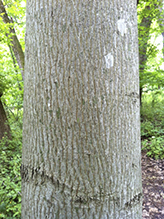 |
|||||
Old bitternut hickory trunk |
|||||
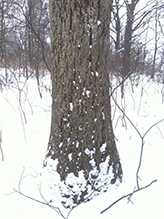 |
|||||
Mixed woods, hickory/oak/maple/basswood |
|||||
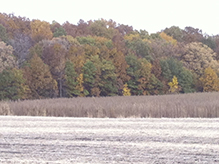 |
|||||
Fall color |
|||||
 |
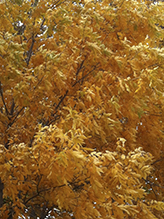 |
||||
Young Bitternut Hickory |
|||||
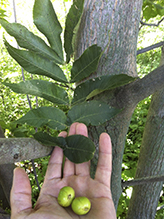 |
|||||
...a very large, very old, bitternut hickory growing wild near Faribault, MN. Would likely be state champ except that it is double trunked. |
|||||
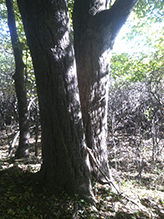 |
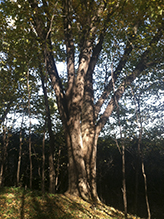 |
||||
MinnesotaSeasons.com Photos |
|||||
Bark |
|||||
 |
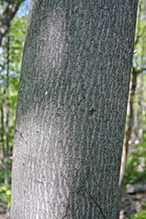 |
||||
Leaves |
|||||
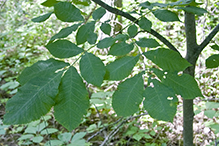 |
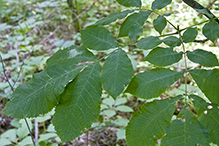 |
||||
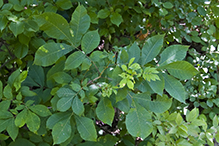 |
|||||
Fruit |
|||||
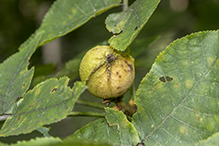 |
|||||
Seedling |
|||||
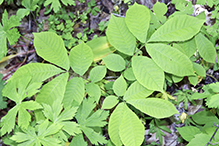 |
 |
||||

Slideshows |
||

Visitor Videos |
|||
Share your video of this plant. |
|||
| This button not working for you? Simply email us at info@MinnesotaSeasons.com. Attach a video, a YouTube link, or a cloud storage link. |
|||
Other Videos |
|||
| Trees with Don Leopold - bitternut hickory ESFNature |
|||
About
Published on Dec 12, 2013 Don Leopold demonstrates the characteristics of bitternut hickory. Content produced by Christopher Baycura for the SUNY College of Environmental Science and Forestry (SUNY-ESF). |
|||
| Carya cordiformis VT Dendrology |
|||
About
Published on Apr 18, 2016 bitternut hickory |
|||

Visitor Sightings |
|||||
Report a sighting of this plant. |
|||||
| This button not working for you? Simply email us at info@MinnesotaSeasons.com. Be sure to include a location. |
|||||
| Randy June 2017 |
Location: Freeborn County, MN Bark of a middle aged bitternut hickory |
 |
|||
| Randy 12/12/2016 |
Old bitternut hickory trunk |
 |
|||
| Randy October 2016 |
Location: Freeborn County Mixed woods, hickory/oak/maple/basswood |
 |
|||
| Randy August, 2016 |
Location: Freeborn County, MN Young Bitternut Hickory |
 |
|||
| Randy 10/17/2015 |
Location: near Faribault, MN ...a very large, very old, bitternut hickory growing wild near Faribault, MN. Would likely be state champ except that it is double trunked. |
 |
|||
MinnesotaSeasons.com Sightings |
|||||

|
Created: Last Updated: © MinnesotaSeasons.com. All rights reserved. |
